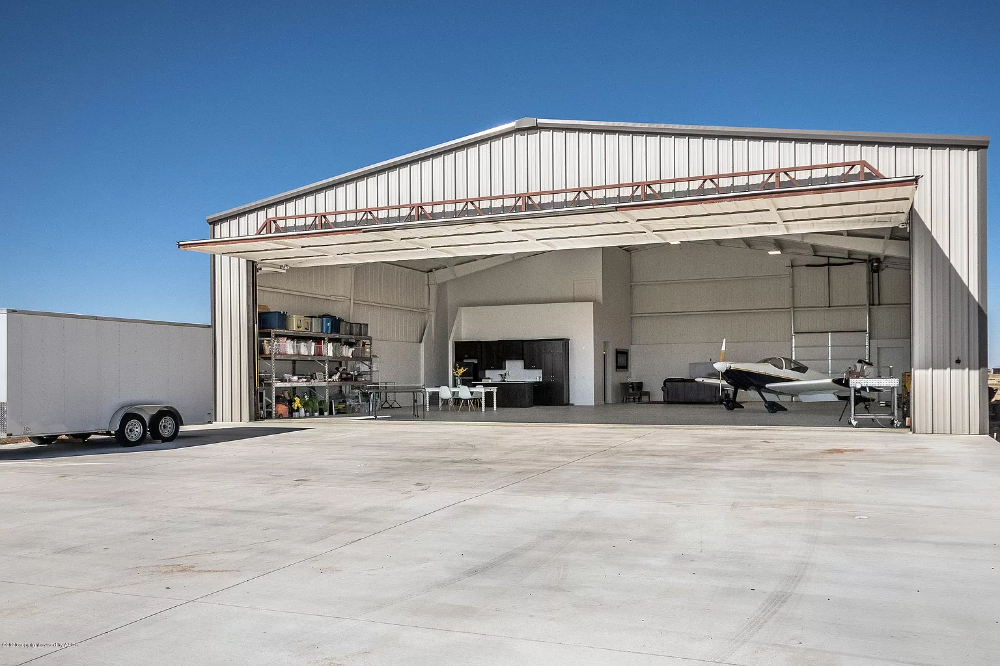Steel hangar construction plays a critical role in modern infrastructure, supporting industries like aviation, agriculture, manufacturing, and logistics. The popularity of steel as a building material comes down to its durability, flexibility, and cost-efficiency. Let’s dive into what makes steel hangar construction essential, the challenges it faces, and the trends shaping its future worldwide.

Why Steel is Perfect for Hangars
Steel has become the go-to choice for hangar construction for good reason. Here’s why:
- Strength and Durability: Steel structures are tough and can handle extreme weather, from heavy snow to high winds and even earthquakes.
- Open Interiors: Thanks to steel’s incredible strength, hangars can be built with clear spans—large, open spaces free from interior columns—perfect for aircraft, heavy equipment, or large vehicles.
- Cost-Effective: Prefabricated steel components cut down on both labor costs and construction time, making steel hangars a smart investment.
- Adaptable: Steel hangars can be customized for various uses—aviation, warehousing, and more—and are easy to expand or modify as needs evolve.
- Sustainable: Steel is fully recyclable, aligning with the push for greener, more sustainable construction practices.
Versatility Across Industries
Steel hangars are no longer exclusive to aviation. They’re now used in a wide range of industries:
- Aviation and Aerospace: Ideal for housing aircraft, steel hangars provide large open spaces and doors designed to fit wide-body planes.
- Agriculture: Farmers rely on steel hangars for storing equipment, grains, and fertilizers, thanks to their protective qualities and low maintenance needs.
- Industrial and Manufacturing: Steel structures are perfect for warehouses, workshops, and assembly plants, offering flexibility for heavy machinery and custom layouts.
- Military: Durable and secure, steel hangars meet the strict requirements for storing military vehicles, aircraft, and sensitive equipment.
Global Trends in Steel Hangar Construction
The industry is evolving rapidly due to advances in technology and shifting market demands. Here are some trends to watch:
- Prefabrication and Modular Construction: Prefabricated steel components streamline construction, improving quality and making transportation and assembly more efficient, even in remote areas.
- Smart Technology Integration: Modern hangars often include smart systems for lighting, climate control, and ventilation, which enhance energy efficiency and usability.
- Sustainability Focus: Developers are adopting eco-friendly materials, renewable energy systems, and energy-efficient designs to meet global sustainability goals.
- Innovative Door Systems: Bi-fold, hydraulic, and vertical lift doors are now standard, offering ease of use and better space optimization.
- Multi-Functionality: Steel hangars are increasingly being designed for mixed use, combining storage, offices, and workshops in one structure.
Challenges in Steel Hangar Construction
Despite the benefits, steel hangar construction comes with some challenges:
- High Initial Costs: While cost-effective over time, quality steel and advanced construction techniques can require significant upfront investment.
- Corrosion: In some climates, protective coatings or treatments are needed to prevent rust and extend the structure’s lifespan.
- Regulatory Hurdles: Building codes and zoning regulations vary by location, making expert guidance essential during the planning phase.
- Logistics: Transporting large, prefabricated components to remote areas can increase costs and lead times.

Regional Insights
Steel hangar construction varies by region, reflecting local needs and priorities:
- North America: Demand is driven by aviation and logistics, with a strong focus on energy-efficient designs and strict building codes.
- Europe: Sustainability is a major focus, with many nations prioritizing green technologies in construction.
- Asia-Pacific: Rapid industrialization and growing aviation sectors in countries like China and India are boosting demand.
- Middle East and Africa: Steel hangars are popular for their ability to endure extreme temperatures and provide ample storage.
Technology Shaping the Future
The future of steel hangar construction is being shaped by cutting-edge innovations:
- 3D Modeling and BIM: These tools ensure precise and efficient design and construction.
- Advanced Coatings: Fire-resistant and anti-corrosion coatings are improving the longevity of steel structures.
- Renewable Energy: Solar panels and other renewable energy systems are becoming common features in new hangars.
Conclusion
Steel hangar construction is an ever-evolving field, combining strength, adaptability, and sustainability to meet the needs of diverse industries. As technology and innovation push the industry forward, steel hangars are set to remain a cornerstone of modern infrastructure.
At Hibuild Steel Building Systems International, we specialize in creating custom steel hangars tailored to your unique requirements. With a proven track record of delivering high-quality projects worldwide, we’re ready to help you build a hangar that lasts.
Let’s bring your vision to life. Partner with us, and we’ll craft a steel hangar that stands the test of time, no matter where you are in the world.
